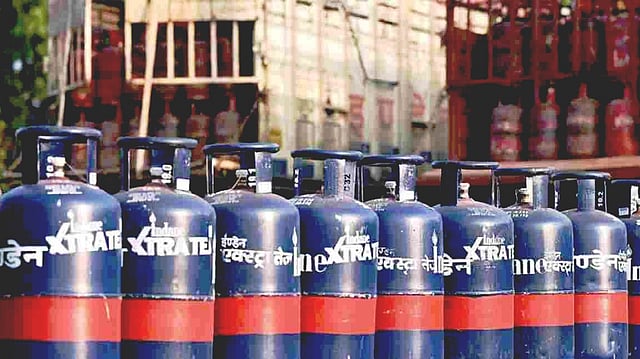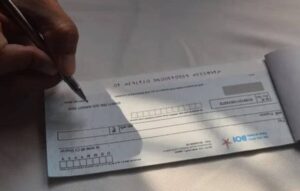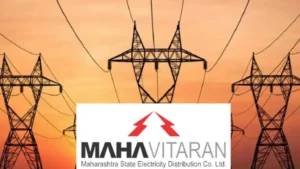Commercial LPG Gets Cheaper by ₹58.50 from July 1; No Relief Yet for Domestic Users

Commercial LPG Gets Cheaper by ₹58.50 from July 1; No Relief Yet for Domestic Users
In a move that brings partial relief to rising operational costs for businesses, the government has once again slashed the price of commercial LPG cylinders. Starting July 1, 2025, oil marketing companies have reduced the cost of the 19 kg commercial LPG cylinder by ₹58.50, offering much-needed relief to hoteliers, restaurant owners, and small business operators across the country. However, prices of the 14.2 kg domestic LPG cylinders have remained unchanged, leaving household budgets unaffected.
What’s Changing and What’s Not?
While the commercial segment has seen this latest price revision, domestic users will have to wait longer for any price cut. The rate for the commonly used 14.2 kg domestic cylinder continues to hold steady. For instance, in Delhi, the domestic LPG cylinder is still priced at ₹853, with no changes seen in other cities either — Mumbai at ₹852.50, Lucknow at ₹890.50, Patna at ₹942.50, Hyderabad at ₹905, Indore at ₹881, and Ghaziabad at ₹850.50.
Oil marketing companies have revised the prices of commercial LPG gas cylinders. The rate of 19 kg commercial LPG gas cylinders has been reduced by Rs 58.50, effective from today. In Delhi, the retail sale price of a 19 kg commercial LPG cylinder is Rs 1665 from July 1. There is…
— ANI (@ANI) June 30, 2025
The reduction in commercial cylinder prices is expected to ease the financial pressure on food businesses, which rely heavily on LPG for cooking. The rate revision is already in effect and applies to cylinders purchased from July 1 onwards.
City-wise Commercial LPG Prices After the Cut
According to Indian Oil Corporation’s updated pricing list, here’s how the 19 kg commercial LPG cylinder now costs in major metro cities:
- Delhi: ₹1,665 (previously ₹1,723.50)
- Mumbai: ₹1,616 (previously ₹1,674.50)
- Kolkata: ₹1,769 (previously ₹1,826)
- Chennai: ₹1,823.50 (previously ₹1,881)
This consistent reduction trend began earlier this year. Commercial LPG cylinder prices were trimmed by ₹41 in April, followed by a ₹14.50 cut in May, and another ₹24 reduction in June. Although there was a minor price increase of ₹6 in March, February had already seen a ₹7 drop — indicating an overall downward pattern in commercial LPG rates over recent months.
A Boon for Businesses, But Households Left Waiting
The fresh price cut will particularly benefit hotels, restaurants, roadside food stalls (dhabas), and small food vendors who use large amounts of LPG daily. The lowered cost is likely to reduce their operating expenses and may even improve the affordability of food and services for customers. However, for ordinary families managing their monthly kitchen expenses, there’s still no respite.
Why Domestic LPG Prices Are Stable
Roughly 90% of India’s LPG consumption is attributed to household use, with the remaining 10% divided among commercial, industrial, and automotive sectors. Despite frequent changes in commercial LPG prices, domestic rates tend to remain more stable due to policy buffers and government oversight.
One reason for this price stability is linked to India’s pricing mechanism. Domestic natural gas prices are pegged to 10% of the average crude oil basket, and in May 2025, this crude basket price dropped to $64.5 per barrel — the lowest in three years. This sharp decline could ease pressure on oil companies in the months ahead, potentially reducing their LPG-related losses by up to 45% in FY 2026, if crude prices stay in the same range.
Ujjwala Scheme Continues to Offer Domestic Subsidies
While no price cut has been granted to general households, beneficiaries of the Pradhan Mantri Ujjwala Yojana (PMUY) are still receiving a subsidy of ₹300 per cylinder. This financial support is directly transferred to the bank accounts of over 10 crore eligible families, providing some cushioning against rising fuel expenses.
India’s dependence on LPG has grown significantly in the past decade. By April 2025, the number of domestic LPG connections had doubled to nearly 33 crore, showing how crucial this fuel source has become in Indian households. Yet, the lack of a price reduction for domestic users continues to be a concern, especially amid broader inflationary trends.












